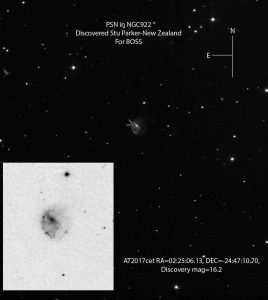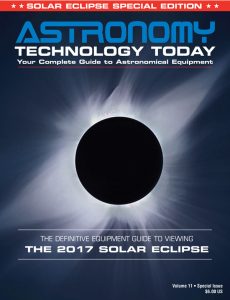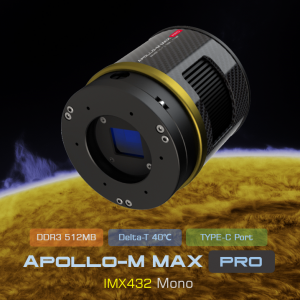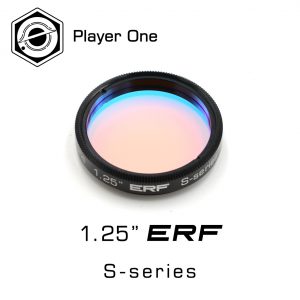With each new advancement in the technology available to amateur astronomers, the line between amateur and professional – already barely distinguishable – is further blurred. There may be no better example than the feats of the Backyard Observatory Supernova Search (with the enviable acronym, “BOSS”).

Boss represents an amateur collaboration of 6 friends from Australia and New Zealand who have worked together as a group since mid 2008 to search, discover, record, and report new supernovae in the southern sky. The group’s goal is to provide accurate and reliable discovery reports to the Central Bureau for Astronomical Telegrams (CBAT) for further investigation by professional astronomers and their resources. CBAT is operated at the Harvard-Smithsonian Centre for Astrophysics, Department of Earth and Planetary Sciences at Harvard University, Massachusetts, USA.
The latest discovery by the team (shown in Image 1) is a possible supernova in NGC922 found on March 15, 2017 Stuart Parker, Canterbury, New Zealand, reports the discovery of an apparent supernova (red mag 16.2) on a 30-s unfiltered CCD image (limiting mag 18) taken by himself with a 30-cm Astro-Tech AT12RC Ritchey-Chretien astrograph (+ ST10 camera) at his Parkdale Observatory in the course of the Backyard Observatory Supernova Search which is 24E”and 11N”of the nucleus of the galaxy NGC922.
So, what is a typical evening of discovering a Supernova? Take for example Monday night, February 8 in Brisbane (Queensland, Australia). Peter Marples started his usual supernova search program for the night, which involves taking
When Peter checked his image of NGC5128, he found that the normal star, UCAC4 235:66549, looked

abnormal and thought it might have a supernova next to it. So, he rang fellow team member Greg Bock (also of Queensland) to discuss it. Greg immediately took some images which confirmed indication of a supernova, but his early images were streaked by wind, so not fit for publication. Greg continued his analysis while beginning reports to professionals. To put those communications in perspective, Greg and Peter participated in 136 emails with professional astronomers … within three hours of the discovery.
Peter and Greg checked with team member Stuart Parker (New Zealand) the following morning to see if he had any earlier images, and he had one taken on February 3 that did not show the event, which meant that 2016adj was indeed a very young explosion.
Supernova 2016adj, shown in Greg Bock’s accompanying image (Image 2), is located in the Hamburger Galaxy (NGC5128), about 12-million lightyears away. Greg’s image does a great job of

resolving the area around the supernova, showing a clear gap between it and the bright foreground star to the upper right of the supernova, which star lies in our own Milky Way galaxy.
More impressive is that the BOSS team, consisting of Greg Bock, Peter Marples, Stuart Parker, Brendan Downs, Pat Pearl and Colin Drescher, is credited with 139 supernova discoveries … and counting.
The BOSS team has not only proved that scientifically-significant discoveries are within reach of all dedicated amateurs, it has also established beyond argument that such discoveries are also within reach of astro tech that is readily available to amateurs.
Greg’s current search instrument is an SBIG ST10XE mated to a 14-inch Meade LX200R on a Skywatcher EQ8. Peter uses a Starlight Xpress SXVH694 and a 12-inch Meade LX200R also on a Skywatcher EQ8. Stuart uses two rigs consisting of two SBIG ST10XME cameras, an AtroTech 12” F8 RC, a 14-inch Celestron SCT and two Software Bisque Paramounts.
Colin uses SLOOH’s on-line remote telescopes in the Canary Islands and Chile. Brendan Downs conducts his searches with an SBIG ST8 imaging through a 14-inch Meade LX200ACF on a Paramount ME. Pat Pearl’s current instrument of choice is a Starlight Xpress SXVH694 mated to a 10-inch Meade LX200R, and a 14” Meade LX200ACF on a Skywatcher EQ8 .
Inspiration can be found wherever dedicated amateur astronomers share their experiences, and you’ll find several lifetimes worth at www.bosssupernova.com.
###
 The Astronomy Technology Today editorial staff would like to take this opportunity to remind you of the availability of our Solar eclipse equipment guide – The Definitive Equipment Guide to the 2017 Solar Eclipse. Our goal with the 40 page publication is to provide an easy-to-consume introduction to the technological options for viewing and imaging the Great Solar Eclipse. We cover the gamut of options available including building you own solar viewer, solar glasses, smart phones, DSLR cameras, using astronomy telescopes, solar telescopes, using binoculars, solar filters (including a DYI filter option), CCD astro cameras, astro video cameras, webcams and much more. You can view the guide on our website here – its free and there is no requirement to sign up to read the guide.
The Astronomy Technology Today editorial staff would like to take this opportunity to remind you of the availability of our Solar eclipse equipment guide – The Definitive Equipment Guide to the 2017 Solar Eclipse. Our goal with the 40 page publication is to provide an easy-to-consume introduction to the technological options for viewing and imaging the Great Solar Eclipse. We cover the gamut of options available including building you own solar viewer, solar glasses, smart phones, DSLR cameras, using astronomy telescopes, solar telescopes, using binoculars, solar filters (including a DYI filter option), CCD astro cameras, astro video cameras, webcams and much more. You can view the guide on our website here – its free and there is no requirement to sign up to read the guide.



